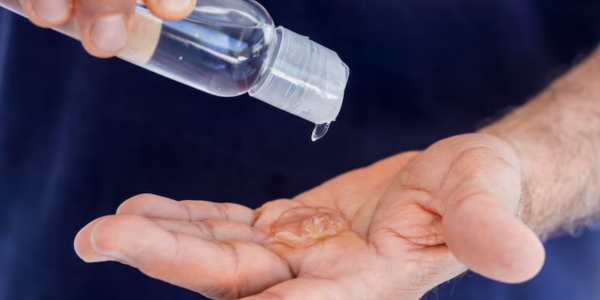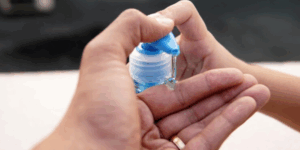How to Use Hydrogen Peroxide for Erectile Dysfunction
How to Use Hydrogen Peroxide for Erectile Dysfunction: A Comprehensive Guide

Hydrogen peroxide may improve circulation for erectile dysfunction through foot soaks, topical applications, or baths, but use with caution.
Erectile dysfunction (ED) is a common condition that affects millions of men worldwide, making it difficult to achieve or maintain an erection suitable for sexual activity.
It can have various causes, from physical issues like poor circulation and hormone imbalances to psychological factors like stress and anxiety.
While many treatment options exist, ranging from medications to therapy, some people are turning to alternative solutions that may provide relief.
One such solution gaining attention is hydrogen peroxide (H2O2). But how effective is hydrogen peroxide for erectile dysfunction, and how should it be used?
In this comprehensive guide, we will explore the potential benefits and risks of using hydrogen peroxide for ED, the science behind how it might work, and the most effective ways to incorporate it into your routine.
What is Hydrogen Peroxide?
Hydrogen peroxide (H2O2) is a chemical compound that consists of water (H2O) with an extra oxygen atom.
It is commonly used as an antiseptic to clean wounds, disinfect surfaces, and even whiten teeth. Its natural oxidizing properties give it the ability to kill bacteria, viruses, and fungi, which is why it’s often found in first aid kits and household products.
Beyond its common uses, hydrogen peroxide is also gaining popularity in alternative health circles for its purported benefits in various conditions, including erectile dysfunction.
The idea is that the oxidizing properties of hydrogen peroxide can enhance blood flow and tissue repair, two factors that are crucial for sexual health.
How Does Hydrogen Peroxide Relate to Erectile Dysfunction?
Erectile dysfunction is primarily a blood flow issue. When a man becomes sexually aroused, blood vessels in the penis expand, allowing blood to flow into the penis, creating an erection.
If the blood flow is obstructed or weakened, achieving or maintaining an erection becomes difficult. This can happen for a variety of reasons, including poor circulation, clogged arteries, diabetes, high blood pressure, and other vascular problems.
Hydrogen peroxide has long been used in medicine to promote healing by increasing oxygen levels in tissues. Its ability to release oxygen when it breaks down could, in theory, promote better circulation and tissue regeneration, potentially helping to restore erectile function.
However, there is limited scientific research directly connecting hydrogen peroxide to ED treatment, making this a topic of ongoing interest and debate.
The Role of Nitric Oxide in Erectile Function
To understand how hydrogen peroxide might help with erectile dysfunction, it’s important to first understand the role of nitric oxide (NO) in the body.
Nitric oxide is a gas naturally produced by the body that helps relax the blood vessels, improving blood flow. This is crucial for men with ED, as reduced nitric oxide production can lead to poor blood circulation in the penis, making it difficult to achieve or sustain an erection.
Hydrogen peroxide may influence nitric oxide levels in the body. When hydrogen peroxide is broken down into water and oxygen, it can release reactive oxygen species (ROS) that interact with various biological molecules.
Some research suggests that hydrogen peroxide could stimulate the production of nitric oxide by enhancing the action of enzymes responsible for producing it.
By increasing nitric oxide, hydrogen peroxide could theoretically help improve blood flow to the penis and aid in resolving erectile dysfunction.
Methods of Using Hydrogen Peroxide for Erectile Dysfunction
Hydrogen peroxide should be used cautiously, especially when it comes to internal or systemic use.
It is generally safe when applied topically in diluted concentrations, but its internal use requires careful consideration. Below are some potential methods for using hydrogen peroxide for erectile dysfunction:
1. Hydrogen Peroxide Foot Soak for Improved Circulation
One of the most common ways hydrogen peroxide is used for health benefits is through foot soaks. While this method doesn’t directly target erectile function, it can help improve overall circulation, which may, in turn, improve blood flow to the penis. Here’s how to do it:
What You Need:
- 1/2 cup of hydrogen peroxide (3% solution)
- A basin or container large enough to soak your feet
- Warm water
Instructions:
- Fill the basin with warm water.
- Add the hydrogen peroxide to the water and mix well.
- Soak your feet in the mixture for 20-30 minutes.
- Relax and enjoy the soak, focusing on the deep relaxation and circulation benefits.
While this method won’t directly treat ED, it can be a simple and relaxing way to improve overall circulation and reduce systemic inflammation.
2. Hydrogen Peroxide Enemas (Used with Caution)
Hydrogen peroxide enemas are a more controversial approach and should only be done under the supervision of a healthcare professional.
The theory behind this method is that hydrogen peroxide, when introduced into the colon, can be absorbed into the bloodstream, releasing oxygen and improving circulation throughout the body, including to the penis.
Important Note: This method is highly controversial, and it’s essential to consult with a healthcare provider before attempting it. Hydrogen peroxide can be toxic if used improperly, and improper concentrations or excessive use can cause harm.
3. Topical Application (Hydrogen Peroxide Gel or Cream)
Some people choose to apply hydrogen peroxide topically to the skin near the pelvic area in an effort to improve circulation.
The idea is that the hydrogen peroxide will help enhance blood flow in the skin, which may contribute to better overall circulation to the penis.
What You Need:
- Hydrogen peroxide (3% solution)
- Cotton ball or swab
- A clean towel or cloth
Instructions:
- Dampen a cotton ball or swab with the hydrogen peroxide solution.
- Gently apply it to the skin near the pelvic area.
- Let the area air dry and avoid washing the skin immediately after application.
While topical use is unlikely to directly treat erectile dysfunction, it may help stimulate circulation in the surrounding area.

Potential Risks and Side Effects of Using Hydrogen Peroxide
While hydrogen peroxide may offer benefits in certain applications, it’s important to be aware of the potential risks, especially when it is used in non-conventional ways, such as internally or topically in high concentrations.
- Skin Irritation: Hydrogen peroxide can cause irritation, burning, or even chemical burns if used undiluted or in high concentrations. It is important to dilute hydrogen peroxide properly before using it on the skin.
- Damage to Tissues: Using hydrogen peroxide in or around sensitive areas, such as the genitals, could lead to damage or scarring if not used with care.
- Toxicity: Ingesting hydrogen peroxide in inappropriate concentrations can lead to nausea, vomiting, and damage to the gastrointestinal tract. Overuse of hydrogen peroxide can also lead to oxygen toxicity.
- Allergic Reactions: Some individuals may experience allergic reactions to hydrogen peroxide, including rashes or swelling.
Other Proven Treatments for Erectile Dysfunction
While hydrogen peroxide shows promise in some alternative health circles, it is important to consider more established treatments for erectile dysfunction. These treatments are typically more researched and have been shown to be effective.
- Medications: Drugs like Viagra, Cialis, and Levitra are well-known treatments for ED. They work by increasing blood flow to the penis, making it easier to achieve and maintain an erection.
- Penile Pumps: These devices use vacuum technology to draw blood into the penis, helping to create an erection.
- Lifestyle Changes: Regular exercise, a healthy diet, reducing stress, and avoiding smoking and excessive alcohol consumption can significantly improve erectile function.
- Psychological Counseling: For men whose ED is caused by psychological issues, therapy or counseling can help address the underlying emotional or mental health concerns.
- Surgical Interventions: In some cases, surgery may be necessary, especially if there are anatomical issues causing erectile dysfunction.
Conclusion
Hydrogen peroxide is an interesting substance with a variety of potential uses, but its application in treating erectile dysfunction is largely experimental and should be approached with caution.
While there is some theoretical basis for hydrogen peroxide’s role in improving circulation and nitric oxide production, more research is needed to establish its effectiveness and safety.
If you are struggling with erectile dysfunction, it’s important to consult a healthcare provider before trying unconventional treatments.
There are several proven methods for managing ED, and a doctor can help guide you toward the most appropriate solution for your individual needs.
For now, it’s wise to consider hydrogen peroxide as a potential adjunct to more traditional treatments, rather than a primary therapy.
Always prioritize your safety, and remember that your health should be the top priority when addressing any medical condition.

.